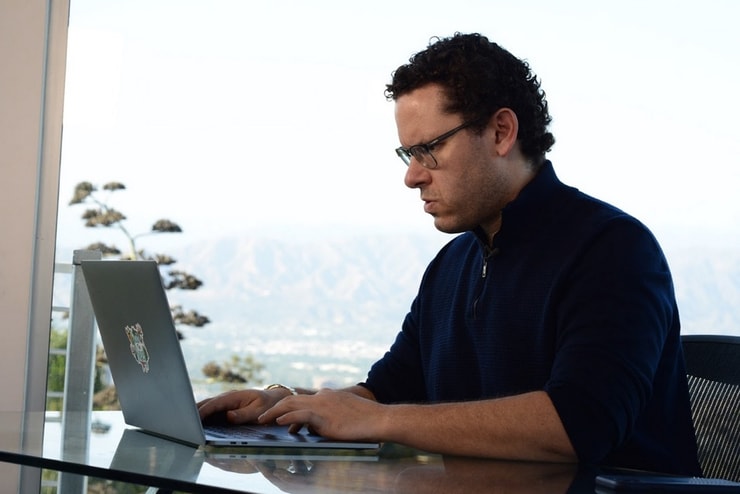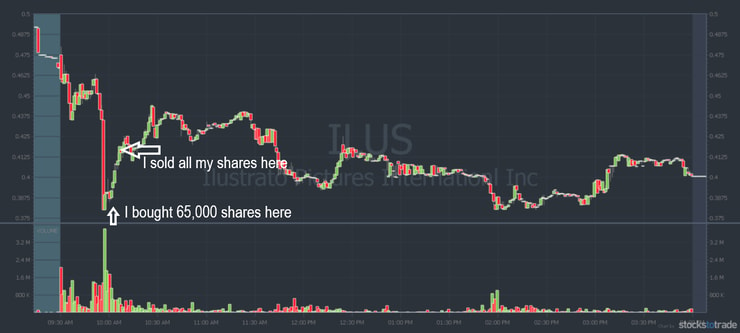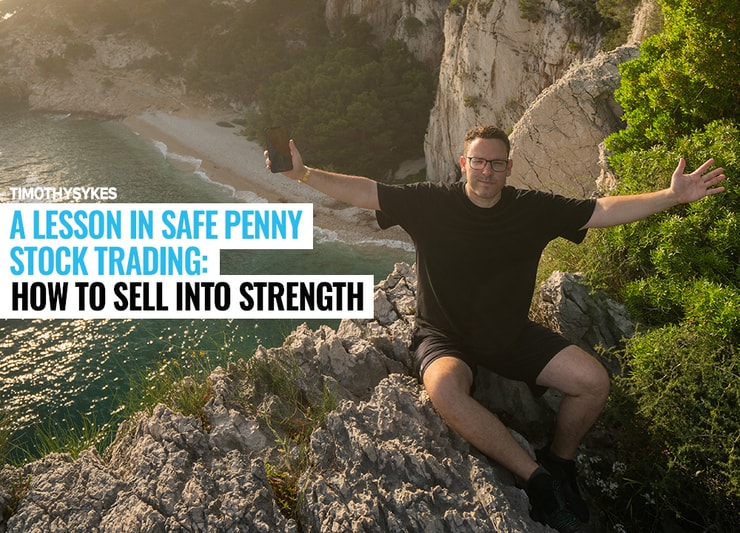Sell Into Strength: Key Takeaways
- Why you don’t have to catch the bottom and top of every move…
- How to sell into strength with a $1,755 trade example…
- Find out how you can learn to trade penny stocks with me and see my top penny stock education resources…
If you want to grow a small account over time, you need to learn to sell into strength. My rule #1 is to cut losses quickly, but many times I cut profits quickly too. If that seems counterintuitive, keep reading…
Table of Contents
Focus on Your Education First

2025 Millionaire Media, LLCYou have two accounts: your trading account and your knowledge account. You have to grow your knowledge account first — before you even think about the money.
And right now is an amazing time to learn…
The recent stock market’s the best I’ve seen in decades. But it also taught a lot of new traders some bad habits.
You have so many ways to grow your knowledge account. You can paper trade using StocksToTrade. Watch the stocks my students and I trade each day to understand the process. (See all my trades here.)
Plus, I share even more ways for you to learn below.
What Is Selling Into Strength?
Selling into strength to me means I exit my long positions when a stock’s moving higher.
I aim to take the meat of the move. I don’t hold and hope a stock will keep spiking. And I don’t wait for a stock to panic before I cut losses.
I often underestimate penny stocks and sell too soon.
That’s OK. I don’t time my trades perfectly. And I don’t catch the bottom and top of every move. Yet, I’ve still grown my brokerage account exponentially by selling into strength.
I’m in, out, and on to the next trade.
How to Sell Into Strength: Trade Example

2025 Millionaire Media, LLCLike I said, hot markets can teach new traders the wrong lessons. And penny stock promoters LOVE to prey on uneducated newbies.
They say things like, “Those who sell are weak!” Actually, the opposite is true.
Weakness is going into a trade without a trading plan or clear risk levels.
Want to know how my top students and I have grown our accounts over time? We build our knowledge accounts AND sell into strength whenever possible.
Learn to take profits along the way. Singles add up over time. Cutting losses quickly and selling into strength are smart things to do.
Let’s review one of my recent trades as an example…
ILUS International Inc. (OTCPK: ILUS)
Say it with me now: $2k/day keeps the real job away! My thanks again to the $TGGI $ILUS promoters for creating such predictable patterns, even if all the coke you do makes you believe conspiracy theories that I short sell or I'm out to get you, I'm really just grateful! Thx again
— Timothy Sykes (@timothysykes) September 28, 2021
ILUS was a HUGE penny stock pump. Congrats to the promoters for holding this one up so long.
It climbed from roughly 10–48 cents within a month.
I dip-bought the morning panic on September 28. It was also the stock’s first red day. I bought 65,000 shares at 39 cents and I sold them at $0.417 for a profit of $1,755.
You can see from the chart that I didn’t catch the exact bottom and top. Again, I aim for singles and sell into strength. Then I move on.

Before I bought ILUS, I called the top of this penny stock pump in a video lesson to Challenge students. Here’s how I spotted the top.
And if you still don’t know what I mean when I say to sell into strength…
Study the Past to Prepare for the Future
So far in 2021, I’ve made over $1 million in trading profits. How? I take it one trade at a time while focusing on my rules for safely trading penny stocks.
You can learn from me. Here are just a few things to keep in mind as you go through my lessons and trades…
- What made me take a trade?
- What was the news catalyst and how did I find out about it?
- My goals for the trade — when to cut, hold, and sell into strength.
My lessons and webinars are your opportunity to learn from me. Plus, there’s more to learn on my blog and in my YouTube videos. And you can review my trades.
All this can help you understand how I think about and approach trades.
More Breaking News
- Voyager’s Stock Surges: Opportunity or Overpriced?
- Is It Too Late to Buy Sandstorm Gold?
- Futu’s Unexpected Climb: What’s Behind It?
Learn to Sell Into Strength

2025 Millionaire Media, LLCIf you can learn to sell into strength, it can take a lot of the frustration out of penny stock trading. My thesis is wrong sometimes, but I often still get a small win.
Other times, I underestimate the move — like in the ILUS trade review above.
Either way, it takes the stress out of trading when you cut losses mechanically. With experience, you’ll learn to recognize a wall of sellers. You’ll know when you’ve overstayed your welcome. (Not sure what a wall of sellers looks like? Study my “Learn Level 2” guide.)
And you’ll learn to sell before you hit the wall. Or at least as soon as you see it.
That doesn’t mean you won’t have losses. And it doesn’t mean you won’t be dead wrong sometimes.
But continuous frustration will be less likely. And … you’ll have a better chance to find consistency.
So study my trades and ALL my top students’ trades. Learn everything you can from Jack Kellogg, Roland Wolf, Mike “Huddie” Hudson, Matt Monaco, and Kyle Williams. That’s the short list of incredible traders you can learn from…
All my top students are part of the Trading Challenge. Apply to the Challenge here.
See how often we sell into strength even when we could’ve made more. It’s less stress and pain over time.
Like the rest of trading, learning to sell into strength takes time and experience. But once you start to lock in profits along the way, singles can start to add up.
Trading Education Resources to Help You Learn to Sell Into Strength

2025 Millionaire Media, LLCWant more resources? You got it.
- Study my 7-step pennystocking framework — it’s a MUST-KNOW penny stock pattern.
- Watch and rewatch my “Pennystocking Framework” and “Pennystocking Framework Part Deux” DVDs.
- Get into the 30-Day Bootcamp that I made with Matt Monaco. It’s all the basics in one place. (You don’t have to complete it in 30 days. You get lifetime access.) You also get the “Pennystocking Framework” DVD and “The Complete Penny Stock Course” book as a bonus.
If you want the full trading education all my top students received — apply for my Trading Challenge now!
Leave me a comment if you understand this lesson and how crucial it is to sell into strength!










Leave a reply